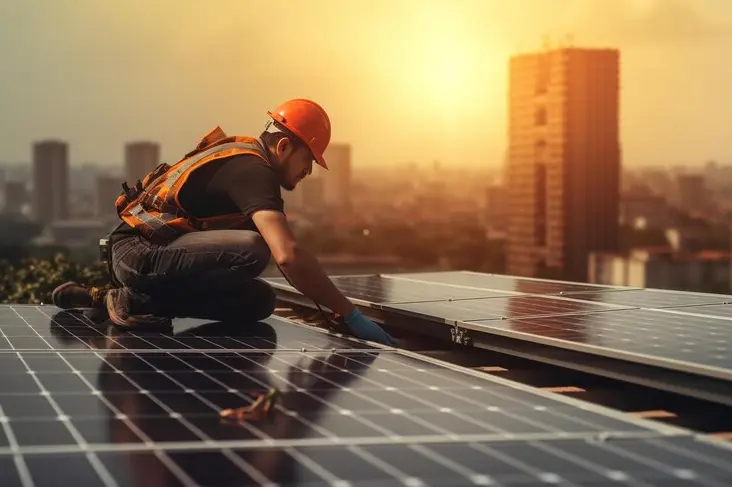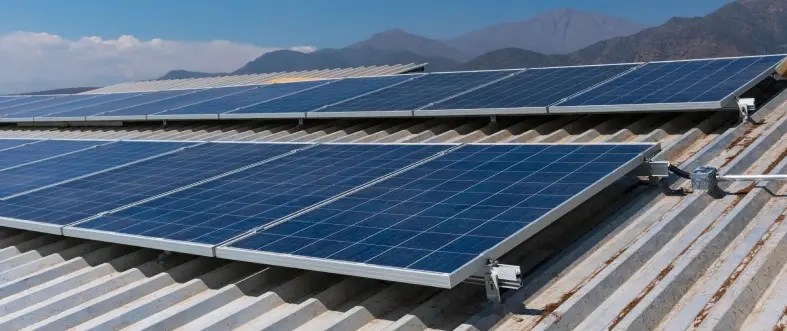
Introduction:
Harnessing solar energy has become increasingly popular as a sustainable and cost-effective way to power homes and businesses. If you’re considering installing a 10kW solar system in Sydney, you might be wondering how much energy it should produce. In this comprehensive guide, we’ll delve into the factors that influence the energy output of a 10kW solar system in Sydney, offering insights, expert advice, and answers to common questions.
How Many kWh Should a 10kW Solar System Produce in Sydney?

A 10kW solar system in Sydney should ideally produce around 30-40 kWh (kilowatt-hours) of electricity per day on average. This estimate is based on optimal conditions, including clear sunny days and efficient solar panel performance. However, actual energy production can vary due to several factors:
1. Sunlight Availability:
The amount of sunlight your solar panels receive directly affects their energy production. Sydney’s climate offers a good amount of sunlight throughout the year, contributing to the system’s overall efficiency.
2. Panel Orientation and Tilt:
The direction and tilt angle of your solar panels impact their exposure to sunlight. Panels facing north and tilted at an angle similar to Sydney’s latitude tend to generate the highest energy output.
3. Shading:
Shadows cast on solar panels can significantly reduce their efficiency. Even partial shading, such as from trees or nearby buildings, can lead to energy losses. Ensuring your panels are in a shade-free zone is crucial.
4. Panel Efficiency:
Solar panel technology has advanced over the years, with higher efficiency panels producing more electricity. Investing in high-quality panels can translate to better energy generation.
5. Weather Conditions:
Cloudy days and inclement weather can temporarily decrease solar panel efficiency. While Sydney enjoys a generally sunny climate, occasional cloudy days can impact energy production.
6. Maintenance:
Regular maintenance, including cleaning dust and debris off the panels, ensures optimal performance. Well-maintained panels are more likely to achieve their expected energy output.
Factors Affecting Energy Production:
Achieving the maximum energy output from your 10kW solar system requires understanding the factors that influence its performance. Here are the key factors to consider:
Panel Quality:
Invest in high-quality panels with better efficiency ratings for improved energy production.
Inverter Performance:
The inverter converts solar energy into usable electricity. Choosing a high-quality inverter is essential for optimal performance.
Location and Orientation:
Ensure your panels face the right direction and tilt angle to receive maximum sunlight exposure.
Shading:
Keep the area around your panels free from shading to prevent energy losses.
Maintenance:
Regularly clean and maintain your solar panels to prevent dirt and debris buildup.
Climate:
Weather conditions, including sunlight and temperature, affect energy production.
Expert Tips for Maximizing Energy Production:
To get the most out of your 10kW solar system in Sydney, follow these expert tips:
- Choose Quality Components: Opt for reputable solar panels and inverters known for their performance and durability.
- Optimize Panel Placement: Work with professionals to determine the best angle and orientation for your panels.
- Monitor Performance: Install monitoring systems to track your system’s energy production and identify any issues promptly.
- Trim Nearby Trees: If trees cast shadows on your panels, consider trimming or removing them to improve sunlight exposure.
- Invest in Storage: Consider adding battery storage to store excess energy for use during cloudy days or at night.
- Schedule Maintenance: Regularly clean your panels and perform maintenance checks to ensure efficient operation.
FAQs:
-
How do I calculate the energy production of my 10kW solar system?
Your system’s energy production depends on its efficiency, location, and other factors. On average, a 10kW system in Sydney can produce 30-40 kWh per day.
-
What happens if my solar panels produce more energy than I use?
Excess energy can be fed back into the grid or stored in batteries for later use, earning you credits or providing backup power.
-
Can shading really affect my solar system’s performance?
Yes, even partial shading can significantly reduce energy production. It’s essential to keep panels free from shading to maximize efficiency.
-
Do I need a battery with a 10kW solar system?
While it’s not necessary, adding a battery storage system can help you utilize excess energy and have a backup during power outages.
-
Will my solar panels work during cloudy days?
Yes, solar panels can still generate electricity on cloudy days, although their output will be lower compared to sunny days.
-
Is professional installation necessary for a 10kW solar system?
Professional installation ensures panels are correctly placed, wired, and connected, optimizing energy production and system longevity.
Conclusion:
Investing in a 10kW solar system in Sydney can provide you with a significant amount of clean, renewable energy. By understanding the factors that influence energy production and following expert tips, you can make the most of your solar system’s potential. Remember that while energy estimates are helpful, actual production can vary based on conditions. To maximize your investment, choose quality components, ensure proper installation, and embrace the benefits of sustainable energy.
Call us Today! 1300 72 1887
